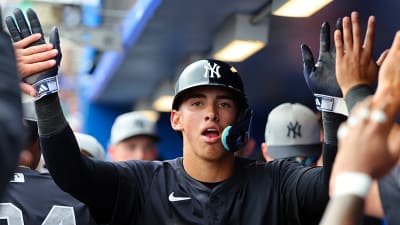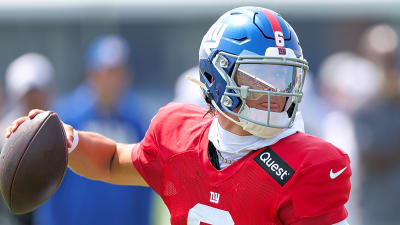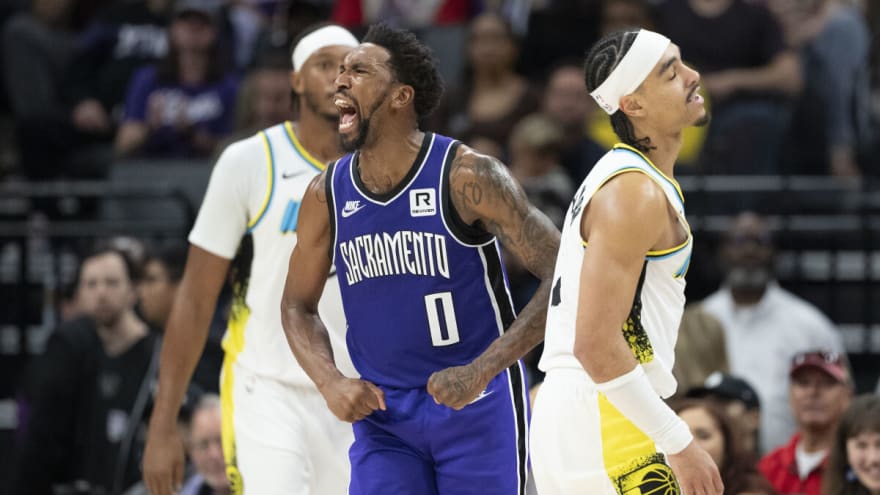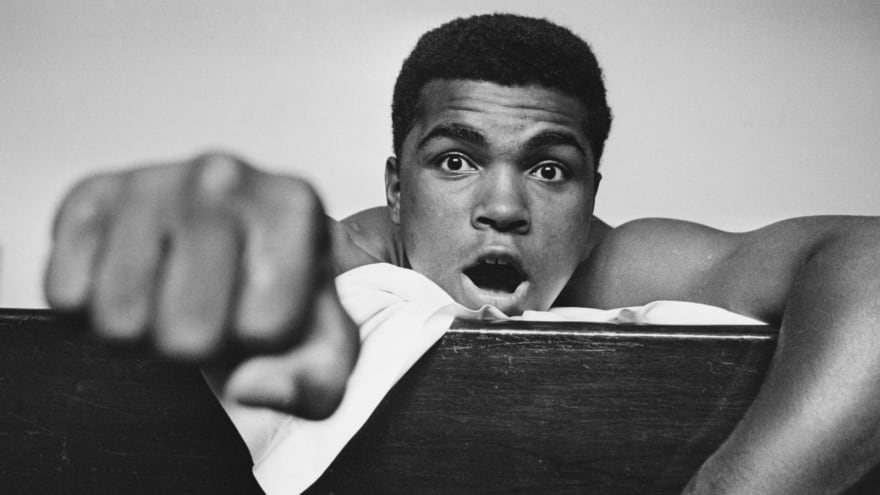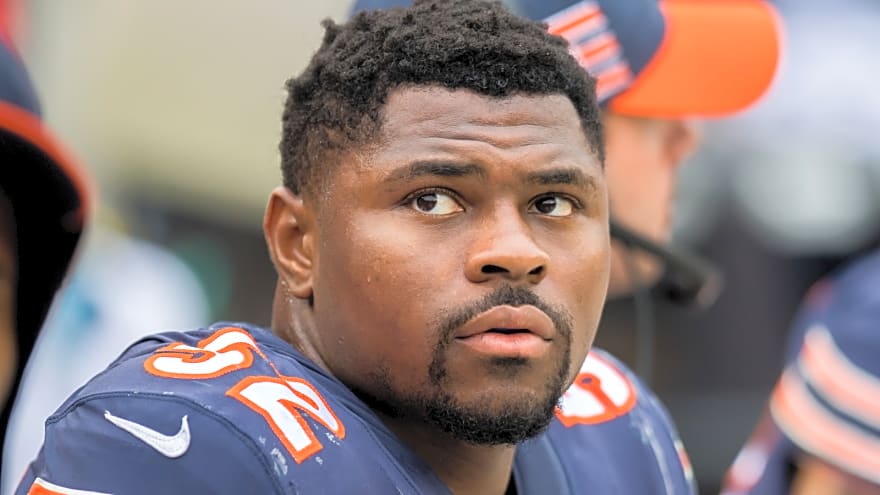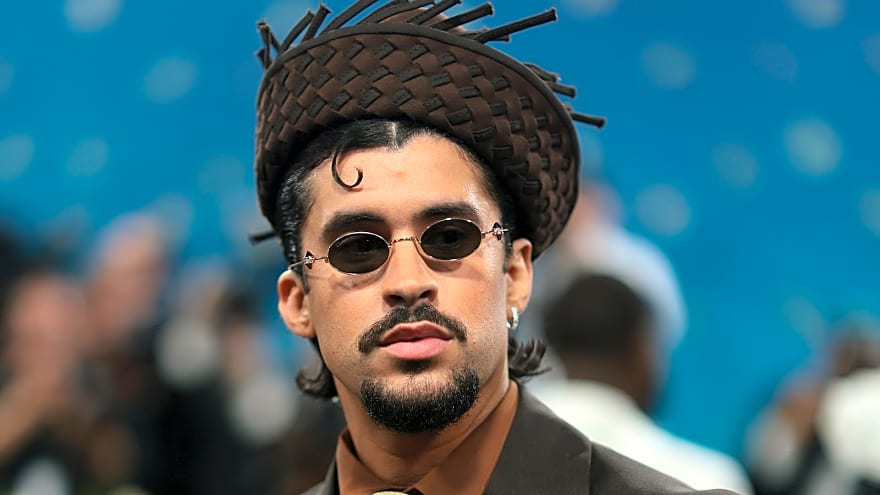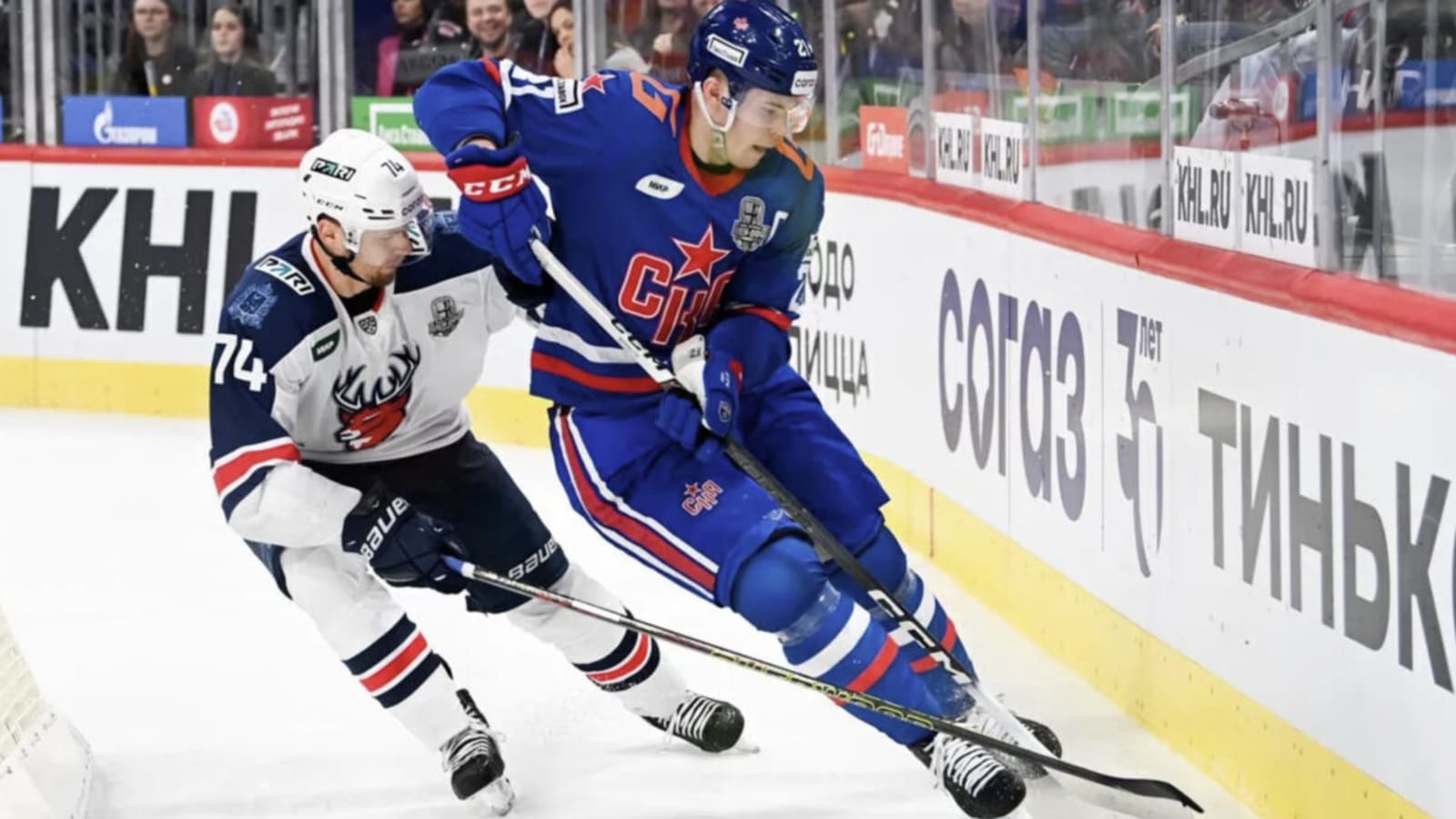
Welcome to the eighth instalment of the revived “Future Canes” prospect series. In this column, we take a look at Carolina Hurricanes prospects who are standing out and enjoying success, whether they’re playing in Canadian juniors, the American Hockey League (AHL), Europe, Russia, or anywhere around the world.
For this column, we will have a look at the impending arrival of soon-to-be fan favorite defenseman Alexander Nikishin, what the trade of Lucas Mercuri means organizationally, and a couple prospects from overseas that might be making the jump to North American hockey this fall. Without further ado, let’s get right into it.
Alexander Nikishin
The long-awaited arrival of Nikishin is on the verge of becoming a reality. With his Kontinental Hockey League (KHL) contract set to expire within two months, the captain of SKA St. Petersburg is just weeks away from officially joining the Hurricanes. It’s been rumored that his contract, due to expire on May 31, could be mutually terminated early as a thank you for his services to the club — and would allow him to join the Canes earlier as they embark on a Stanley Cup playoff journey.
Bringing Nikishin into a group that’s currently firing on all cylinders is a massive addition. He’s the type of physical specimen the Hurricanes have coveted for years — his nickname is literally “Boom” — which derives from the impact that his physicality leaves on the ice. He is a wrecker in open ice. If he’s not separating attackers from the puck with his body, he’s doing it with strong positional awareness and an active stick. He’s also an exceptional offensive threat — he’s scored 17 goals in each of the past two KHL seasons — and has 102 points combined over 128 games. He had yet another standout season for SKA. He can do it all, and he’s considered to be one of the best players outside of the NHL right now for good reason.
The question that the arrival of Nikishin poses is — how do you get him into the lineup? The Hurricanes have run a pretty consistent six-man rotation for much of the season — with Scott Morrow and Riley Stillman really only making relief appearances due to injury. Considering their depth at forward, it doesn’t make any sense to play 11-7 — so where does Nikishin fit? Jaccob Slavin and Jalen Chatfield are non-options to be scratched. The team’s third-pairing consists of Shayne Gostisbehere, who runs the PP1 unit, and Sean Walker, who has arguably been the team’s unsung hero on the defensive side — both are very valuable. That leaves Dmitry Orlov who, when on his game, is a very effective player to have, and Brent Burns.
To me, Burns seems like the obvious choice to make way, but it seems hard to envision the Canes scratching a near 1,500-game veteran player in the playoffs when he’ll likely play all 82 games this season. Objectively, this is a great problem to have, and it’ll be very interesting to see how this situation plays out.
Lucas Mercuri
Traded to the Tampa Bay Lightning in exchange for a 2025 sixth-round pick this past week, the Hurricanes recouped the same asset they used when they selected Lucas Mercuri in the sixth round of the 2020 NHL Draft. I provided an update on the player in one of these prospect reports a couple of months ago, and at that point I was unsure if the Canes would opt to sign him to an entry-level contract. He made the decision easy — by informing the team he would not be signing regardless and requesting a trade elsewhere. So that was that.
In all honesty, I don’t consider this to be a huge loss for the organization. While Mercuri does possess some of the tools you look for in an NHL prospect, he’s still pretty raw at the age of 23. He’s not a great skater, nor does he create a ton of offense — which limits his overall upside. He’s got nice size at 6-foot-3 and nearly 200 pounds, and he’s a much-coveted right-shot center, but he would have been behind players like Justin Robidas, Ryan Suzuki and potentially Felix Unger-Sorum (who can play center) on the organizational depth chart. I can’t really envision any scenario where his development accelerates to the point that he would’ve surpassed any of those guys in front of him, so this trade is really beneficial for both parties.
Making The Jump?
Stanislav Yarovoy
21-year-old winger Stanislav Yarovoy, who the Hurricanes selected in the fourth round of the 2023 NHL Draft, is a candidate to make the jump to North American hockey. He recently wrapped up his season with Podolsk Vityaz of the KHL, where he contributed nine goals (matching his career-high) and 12 points in 49 games, playing up-and-down their lineup in a variety of roles. He’s got some spark in his game and he started to kill penalties for his club on a regular basis this season. He also possesses very high-level puck skills. With his KHL contract now expired, I’m optimistic that he’ll sign an entry-level deal with the Hurricanes over the coming weeks and make the transition to the AHL to continue his development next fall.
Joel Nystrom
I fully expect defenseman Joel Nystrom to join the AHL’s Chicago Wolves on a full-time basis this summer, as he signed his entry-level deal with the Hurricanes last spring. He could even join the team for their playoff run this spring. He set a career-high with 27 points in 51 games for Farjestad of the Swedish league, while providing a steady two-way presence in a top-four role for the club. Nystrom, now 22, is a strong skater and is smart and calm with the puck. He has legitimate upside as a bottom-pair NHL defender, and he’s ready to make the full-time jump to North America.
As always, the important thing to remember with prospects is that development is non-linear. Some players take longer to figure it out than others, and some players never do. Wisely, the Hurricanes’ philosophy over the past few drafts has been to trade back and add more picks, therefore adding more players to their system, which has helped this prospect group grow into one of the deepest in the NHL.
More must-reads:
- 25 great NHL teams that somehow didn't win the Stanley Cup
- Senators take major step toward new stadium
- The 'American League WAR leaders' quiz
Breaking News
Trending News
Customize Your Newsletter
 +
+
Get the latest news and rumors, customized to your favorite sports and teams. Emailed daily. Always free!
TODAY'S BEST

A very early look ahead at the Canucks’ cap space for the 2026 offseason
The 2025 offseason is mercifully nearing its natural conclusion. Give it a month or so, and the Vancouver Canucks and every other NHL team will be back on the ice for their various training camps. Give it two months, and the 2025-26 regular season will have already begun. The summer of 2025 has brought change to the Canucks, though perhaps not as much as some were expecting. There’s still plenty of time for that to change, but it is increasingly looking as though the Canucks will be pursuing some of their ‘missing pieces’ well into the season itself…and perhaps beyond. Which makes this as fine a time as any to temporarily leave the 2025 offseason behind and take a very early look ahead to the 2026 offseason – and, more specifically, how much cap space the Canucks can look forward to having available at that point. The 2026-27 cap ceiling The NHL received a $7.5 million cap ceiling increase this offseason, with the ceiling going from $88 million to $95.5 million. And it’s set to receive an even bigger increase next offseason, with the ceiling going from $95.5 million to $104 million, a jump of $8.5 million. It’s a double-edged sword, really. The Canucks will be glad to have an extra several million to spend – it’s just unfortunate that all their rival teams will receive it, too. Raises incoming The Canucks signed a number of contracts this offseason, and two of them don’t officially start until the 2026-27 season. Which means that a couple of significant raises are already locked into the 2026 and onward books. As of July 1, 2026: – Thatcher Demko goes from $5 million to $8.5 million, a raise of $3.5 million. – Conor Garland goes from $4.95 million to $6 million, a raise of $1.05 million. Coming off the books The Canucks will have several contracts and cap hits that expire as of July 1, 2026. Some of these players will be re-signed in the interim, some will not: – Evander Kane becomes a UFA ($5.125 million). – Derek Forbort becomes a UFA ($2 million). – Teddy Blueger becomes a UFA ($1.8 million). – Kiefer Sherwood becomes a UFA ($1.5 million). – Linus Karlsson becomes a UFA (or an RFA if he plays 53 games or more this season) ($775K). – Victor Mancini becomes an RFA ($870K). Another tiny chunk of dead cap comes off the books, too, in the form of Ilya Mikheyev’s $712,500 in retention coming to an end. That leaves the 2026-27 with a rough skeleton depth chart that looks like… A skeleton depth chart for the 2026-27 Canucks DeBrusk ($5.5M) – Pettersson ($11.6M) – Boeser ($7.25M) Höglander ($3M) – Chytil ($4.44M) – Garland ($6M) O’Connor ($2.5M) – Räty ($775K) – ___________ Bains ($775K) – _____________ – ____________ Hughes ($7.85M) – Hronek ($7.25M) Pettersson ($5.5M) – Myers ($3M) Pettersson ($838K) – Willander ($950K) _____________ – _____________ Demko ($8.5M) Lankinen ($4.5M) Dead Cap: Oliver Ekman-Larsson ($4.77M) [Last year before this amount is cut in half!] That all adds up to 17 of 23 roster spots filled, and a grand total cap hit of $84,992,500, which is a full $19,007,500 under the projected cap of $104 million. Which means at this earliest, most basic stage of preview, we can say that the Canucks will have a little more than $19 million to spend on up to six additional players, or an average of about $3.17 million per player. Adding from within We can probably make that depth chart a little more up-to-date and accurate with a few additions from within. One of those open wing spots should be occupied by Jonathan Lekkerimäki by the start of the 2026-27 season at the latest (assuming he’s not traded in the interim). He’ll be in the last year of his ELC with a cap hit of $918,333. Add Lekkerimäki to the books, and the Canucks are left with $18,089,167 to sign up to five more players, or about $3.62 million per player. Chances are likely that a few other ELCs can be counted on to bring the overall cost down, and to leave more over to be spent on new additions. This might include Kirill Kudryavtsev and Braeden Cootes. We can probably also count on Mancini’s RFA extension not being too pricey, either. Just for fun, let’s add all three to the roster, with Mancini pencilled in at a currently-generous $1.5 million extension. With Lekkerimäki, Cootes, Kudryavtsev, and a re-signed Mancini all on the roster, the Canucks are now at 21 of 23 roster spots filled, and an estimated cap hit of about $89,200,000. That would leave them with roughly $14.8 million to spend on just those two remaining roster spots, or an average of $7.4 million per spot. Conclusions The Canucks might not find themselves flush with cap space as of the 2026 offseason. But they should still have more on hand to spend than they have in this current 2025 offseason, even with those two raises already on the books. This year, the Canucks were really only able to bring in one new player of note in Evander Kane and his $5.125 million cap hit, and they sort of had to let Pius Suter go in order to even have that room available. That contrasts sharply with the $14+ million set to be available in 2026. That’s plenty of cap space to re-sign Kane, if they wish, and to add another $10ish million forward on top of him. Of course, having that cap space and having something to spend it on are two different things. Part of the reason the Canucks can currently count on so much cap space in 2026 is because they haven’t spent to the cap in the present day – they’re still $3.27 million under the projected cap for 2025-26. Chances are, however, that said cap space gets spent eventually – hopefully on the mega Quinn Hughes extension, which he will be first eligible in the 2026-2027 offseason. And depending on the length of contract involved in that spending, the Canucks could definitely find themselves eating into their 2026-27 cap space – and beyond – well before the 2026 offseason has begun. That’s why this is just a very early preview and an extremely rough sketch of what the Canucks will have on hand come the summer of 2026. The time in between will ensure that the reality is at least a little different.
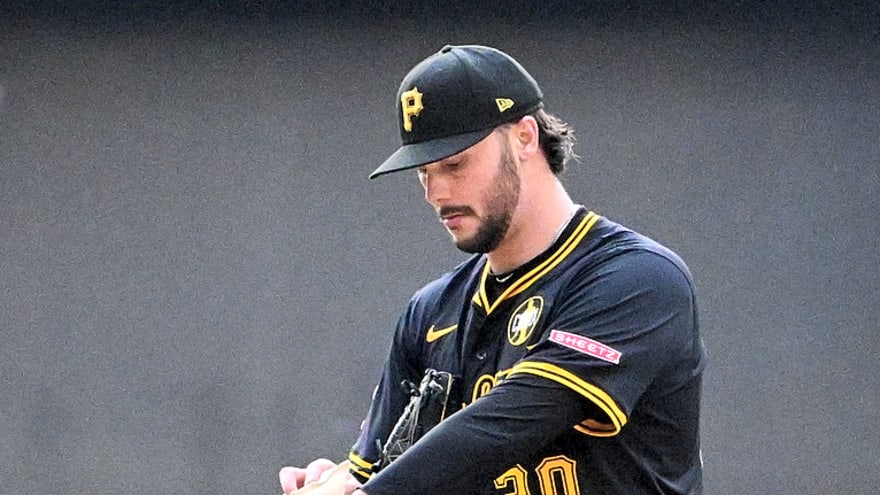
Perhaps Superman Paul Skenes has found his kryptonite
Pittsburgh Pirates ace Paul Skenes may continue to be one of the top contenders for the National League Cy Young Award, but there is one place where he has appeared mortal this season. On Tuesday night, the Milwaukee Brewers did to Skenes what they have done to plenty of MLB pitchers in 2025 ... put up big offensive numbers. For the second time this season, Skenes also pitched in Milwaukee on June 25, the Brewers forced him from the game after just 4.0 innings on Tuesday night, logging six hits and four runs during his time on the mound. Both of those performances came at Milwaukee's home stadium (American Family Field) and both are now Skenes' shortest outings of the season. While another NL Central team has put up more runs against Skenes this season (the St. Louis Cardinals nicked him for five runs in 6.0 innings on April 8), no other team has had the same kind of success over multiple starts by Skenes in 2025 as have the Brewers inside their home stadium. In all this season, Skenes has given up 10 hits and eight runs in 8.0 innings in Milwaukee. It was his third career outing on the road against the Brewers, with his lone 2024 start representing arguably the best outing of his rookie season. On July 11, 2024, Skenes struck out 11 and didn't allow a hit over 7.0 innings as the Pirates would eventually post a 1-0 victory. Tuesday's short outing was highlighted by a pair of Milwaukee home runs, including a leadoff solo shot by Sal Frelick that quickly set the tone for the Brewers. While Milwaukee's hit parade helped raise Skenes' ERA on the season to 2.13, it's hardly any reason for concern in a season where the 23-year-old right-hander is still a heavy favorite (-600) to win the NL Cy Young Award, per BetMGM. Skenes struggling in Milwaukee is likely more yet another stamp of approval on the Brewers' potential to be a threat once the postseason arrives. With an 18-4 record since the All-Star break entering Tuesday, Milwaukee has taken over the NL Central race from the Chicago Cubs. So what's the good news for Skenes? This is Pittsburgh's last trip to Milwaukee this season and the next-to-last series for the Pirates against the red-hot Brewers. Milwaukee will visit PNC Park for a three-game series on Sept. 5-7 and, if Skenes gets a chance for revenge against Milwaukee, there couldn't be a better place for him to take the mound. This season, in 11 starts covering 68.2 innings, Skenes has a 1.70 ERA in the Steel City.

Dillon Brooks and Jalen Green could factor into future Phoenix Suns trades
The Phoenix Suns have made no secret of their ambition to remain in the NBA championship conversation. Two players who could quietly shape the team’s next roster shift are newcomers Dillon Brooks and Jalen Green. The Suns’ front office has shown a willingness to adjust the roster by balancing the urgency to win now with the flexibility to retool quickly. Whether the team is eyeing another blockbuster trade to add another star or a strategic move to bolster depth, Brooks and Green provide two very similar trade profiles. For Suns fans, their presence is about more than just the current rotation for the upcoming season. It’s about keeping the door open for deals that could reshape the Suns’ path to a title. In a league where the right midseason trade can define a playoff run, Brooks and Green may be the keys to the Suns’ next big move. Could the Phoenix Suns move on from Jalen Green and Dillon brooks this early? With Dillon Brooks and Jalen Green now on the roster, the Phoenix Suns face a big decision. Keeping the pair as part of their core or flipping them in a trade to fit the team’s long-term vision is a question the Suns are facing. Brooks brings elite defensive intensity, and a strong defender that can guard the opposing team’s best scorer. His toughness and edge can set a tone for the entire roster, and his playoff experience makes him valuable for a contender. Green, meanwhile, offers youth and explosive scoring upside. At just 23, he averaged 21.0 points per game last season and has the athleticism to grow into a premier offensive weapon. On the other hand, keeping them could provide a defensive anchor and a future star, balancing short-term competitiveness with long-term flexibility. Though if the opportunity does arise to get a star point guard to pair with Devin Booker, Phoenix might just have to pull the trigger.

Knicks Have 'Mutual Interest' With Veteran Shooter: Insider
The New York Knicks are reportedly interested in bringing back veteran shooting guard Landry Shamet. The Knicks are looking to complete their roster for the 2025-26 season. Last season, Shamet appeared in 50 games for the Eastern Conference team after recovering well from a dislocated shoulder during the preseason. During that stretch, Shamet averaged 5.7 points on 39.7% shooting from deep. In the playoffs, he didn't play an integral part in their run. The guard spent most of the time on the bench and suited up for 11 games, averaging 2.4 points on 46.7% shooting from deep. The Knicks are reportedly interested in having him back as one of their veteran leaders. There Is Mutual Interest Between the Knicks And Shamet NBA insider Ian Begley opened up the idea of Shamet returning to the Knicks. He talked about it on the recent episode of the "Putback with Ian Begley." “I’m talking about Shamet because I think there’s still mutual interest there in Shamet and the Knicks,” Begley said. “If I’m guessing, I’m guessing that it ends up with Shamet getting one of those spots… I think it’ll end up that way. “I think there’s a lot of support, internally, for bringing Shamet back. I think there’s a lot of respect for what he did last year with the shoulder injury, getting back on the floor, impacting the things in the postseason.” Begley also entertained the idea of bringing another veteran player onto the roster. He mentioned free agent guard Ben Simmons, who last played with the Los Angeles Clippers. He remains unsigned despited being a former NBA star.

